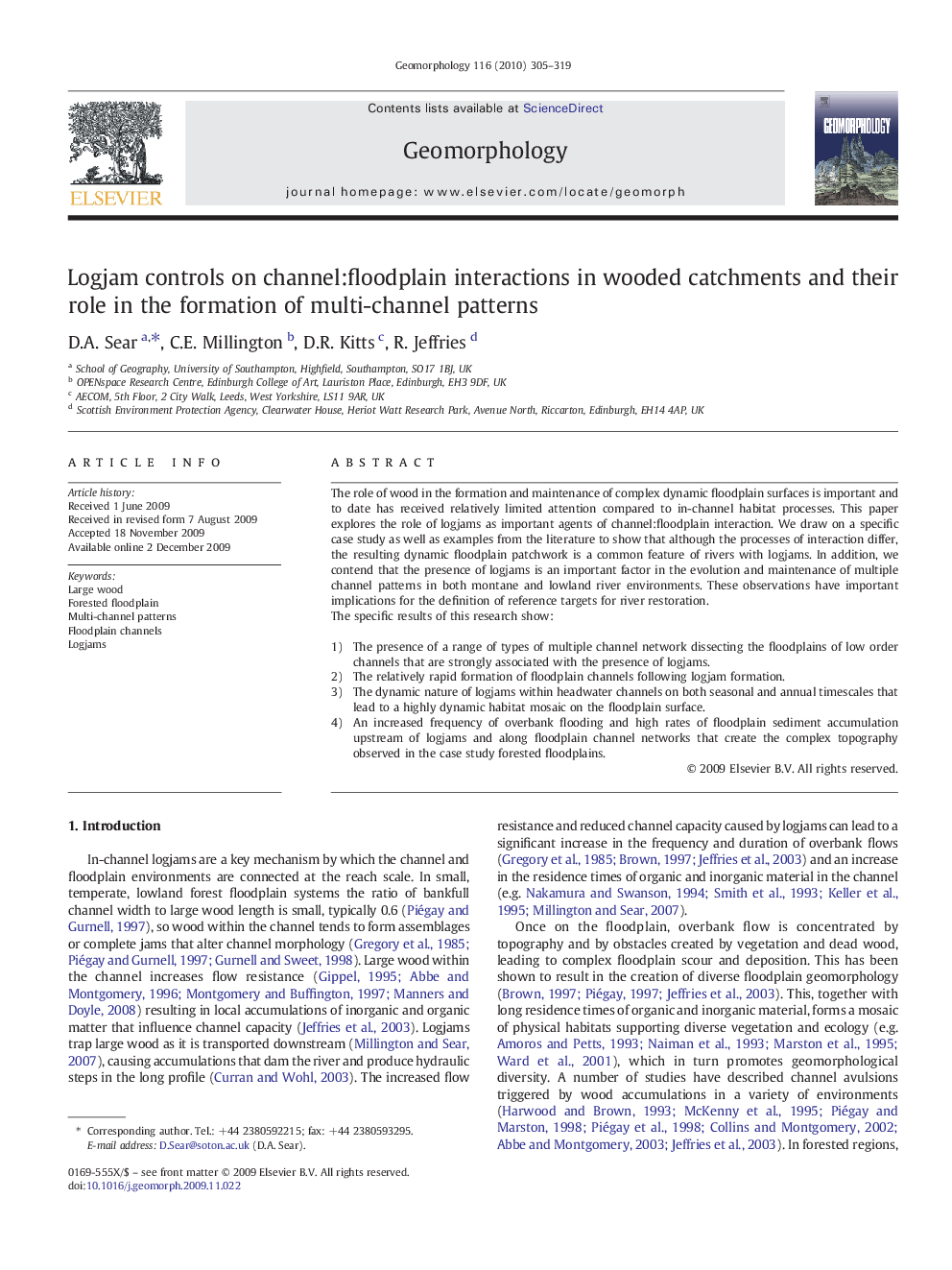| Article ID | Journal | Published Year | Pages | File Type |
|---|---|---|---|---|
| 4686017 | Geomorphology | 2010 | 15 Pages |
The role of wood in the formation and maintenance of complex dynamic floodplain surfaces is important and to date has received relatively limited attention compared to in-channel habitat processes. This paper explores the role of logjams as important agents of channel:floodplain interaction. We draw on a specific case study as well as examples from the literature to show that although the processes of interaction differ, the resulting dynamic floodplain patchwork is a common feature of rivers with logjams. In addition, we contend that the presence of logjams is an important factor in the evolution and maintenance of multiple channel patterns in both montane and lowland river environments. These observations have important implications for the definition of reference targets for river restoration.The specific results of this research show:1)The presence of a range of types of multiple channel network dissecting the floodplains of low order channels that are strongly associated with the presence of logjams.2)The relatively rapid formation of floodplain channels following logjam formation.3)The dynamic nature of logjams within headwater channels on both seasonal and annual timescales that lead to a highly dynamic habitat mosaic on the floodplain surface.4)An increased frequency of overbank flooding and high rates of floodplain sediment accumulation upstream of logjams and along floodplain channel networks that create the complex topography observed in the case study forested floodplains.
